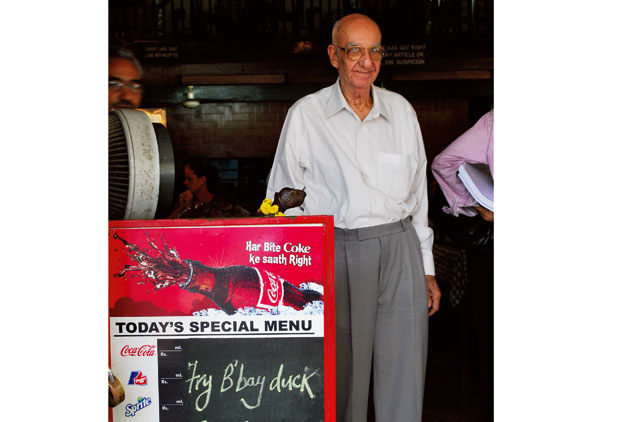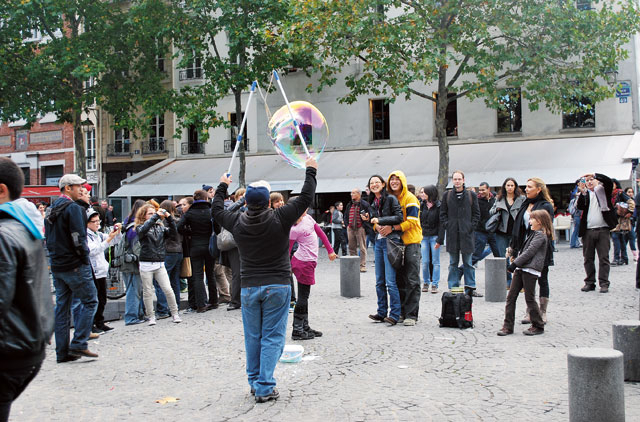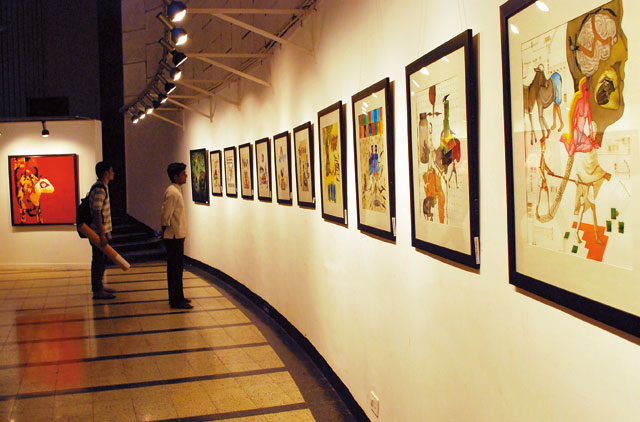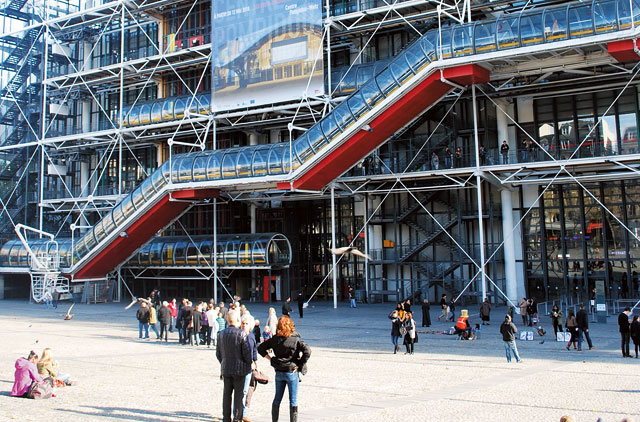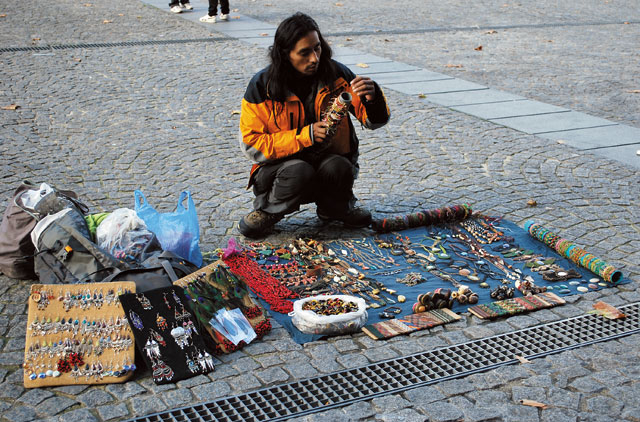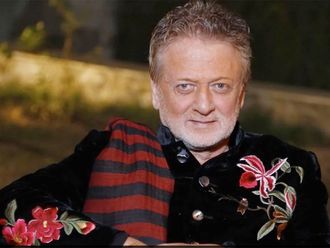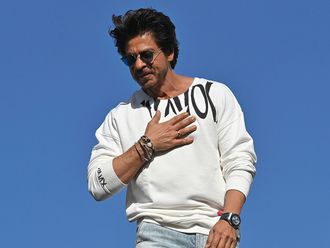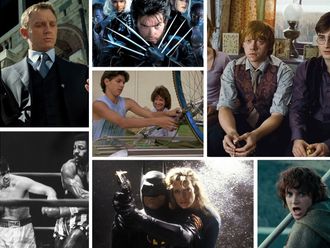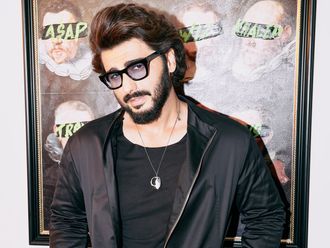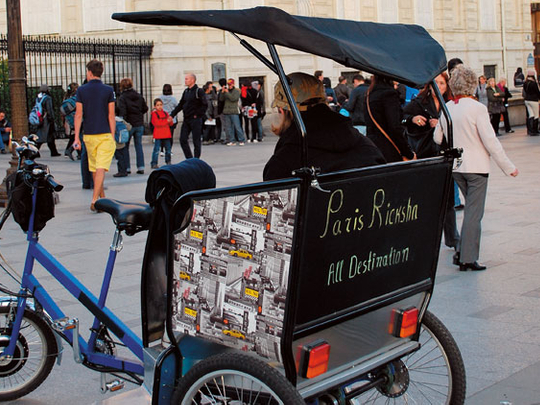
As I bite into a tangy green chutney sandwich at the 54-year-old historic Tea Centre in Mumbai, I know that this is the year of serendipity. Sitting in Mumbai, I am able to simultaneously also enjoy a Parisian state of mind.
The magical affair with tea and all things fragrant and fashionable started two weeks ago when I said yes to a trip to Paris. Thereby getting a chance to witness the mysterious ways of the in-house tea taster at Mariage Frères, a haute couture tea salon on Faubourg Saint-Honoréin Paris.
First, the master taster doled out a specific amount of tea into a pot. Then he filled it with hot water and left it to steep while he took a sip from an earlier pot of tea he had similarly prepared. The brew was not to his liking. So he spat it out, swilled the entire contents of the pot down a huge multi-perforated drain in front of him and started afresh.
Horrors, I thought. To start all over again is every host's nightmare. But starting all over again is how Mariage ensures its every cup of tea is perfect. Not too bitter, not too light, just fragrant enough to transport you into tea heaven. I am permanently transformed with the knowledge and it has made me re-examine my love affair with dunking my tea bag or one-minute quick brew with Jasmine Silver Tip or Orange Pekoe.
But then cities can be full of discoveries, especially, cities such as Paris and Mumbai, both of which I visited within the short span of two weeks. Teeming with history, business, culture, spirit and a certain je ne sa quois, as the French say.
Multiple delights
Take Paris. Full of surprises. Such as Aishwarya Rai Bachchan's face that looks down with a bemused smugness from a Longines ad at the Gare Du Lyon station while I wearily drag my bag across its base after a high-speed, six-hour Eurail trip from Nice.
The same evening, I get two more jolts as I near the end of the Champs-Elysees stretch. Picture this: I am slowly starting to absorb the actual reality of being in Paris - the bustling, happily priced Monoprix store where one can pick up last-minute purchases such as the forgotten toothbrush, the old-fashioned coffee shops with people spilling over on to the road, young skateboarders, Pizza Vesuvio, the same fashion stores as in Dubai and the sheer magnificence of the Arc de Triomphe, when my roving camera catches the ubiquitous McDonald's sign, just five minutes away from the Arc. Hail the burger, the beloved indispensable of teenagers, children and people the world over. The globalisation of Ronald seems to cut right across and through the claimed haughtiness of the French and the LVMH headquarters on the opposite street, where people stand in long queues for some sale. C'est la vie.
The novelty of the rickshaw
It is icy cold and I huddle further into my cashmere jacket and serendipitously, I stumble upon a rickshaw. A rickshaw in Paris. Waaah! Thomas Friedman, you are right. The world is indeed flat.
Having travelled in Mumbai's autorickshaws (my first home city), seen Kolkata's weary rickshaw pullers in movies and read about the tuk tuks of Indonesia, this is the last place I expected to find this mode of transport.
A return trip for two from the Champs-Elysees to the Eiffel Tower costs 30 euros (Dh142). After a while, the rickshaw driver says he can do it for 25 euros and offers his card in case we (another journalist on this trip) need his services. He warns us against visiting the place on a Sunday since Parisians turn out in hundreds on any holiday and usually head out to the famous icon, creating a human traffic jam of sorts. So I glimpse the Eiffel Tower from different parts of Paris over the next two days - from the sixth floor of Le Bristol where I am a guest, from the topmost floor of the Pompidou Centre, and while walking around different streets. My delighted reaction is akin to visitors in Dubai when I drive them around the city and they spy the Burj Khalifa from different parts of the city.
The Pompidou Centre
It's time to pander to the other muses. For instance, by visiting the Pompidou Centre designed by architects Renzo Piano and Richard Rogers. Its industrial design makes a bold statement amid the high density old-fashioned 4th Arrondissement (district) of Paris. We bumble our way up the escalator and get some great views of Paris, albeit through dusty glass, of the Tour Montparnasse on the left and the hilltop of the Sacré-Coeur on the right. Entry to the museum starts at nine euros depending on the season while an annual pass starts at 22 euros. The museum is closed on Tuesdays and May 1. It is open on other days from 11am to 9pm.
To be honest, the entire group agrees unanimously that they prefer to go elsewhere instead of viewing the featured artist (best unnamed) filmed breaking a piano and then burning it. The art store in the building has some unusual pieces but at steep prices.
Instead, we take time to experience the Place Georges Pompidou (see box).
From here, we take a cab to Le Marais (meaning the Marsh), which is the alternative fashionistas' haunt in the city. It spreads across parts of the 3rd and 4th Arrondissements and traffic is banned in this quarter on Saturdays and Sundays. This means you can wander the meandering roads, check out historic buildings, shop for clothes in its many little charming stores, pick up something to eat, visit the Carnavalet Museum, or then explore the Mona Lisait bookshop, which sells art books, coffee table books and the like at reduced prices. I pick up a stunning plastic acrylic from a tiny shop called Aventurine, which is full of funky bijoux. One can also visit the Musée Picasso, an art gallery located in the Hôtel Salé in the same area.
Let me dispel a myth here and now. The French are friendly. Almost all the people I met were helpful - explaining directions, figuring out a dress size or translating menus. Some have even seen the newer Bollywood movies. I still remember the unnamed gallant man who appeared out of nowhere at Nice station and carried my bags to the next platform before vanishing with a grin. It is people, food, art that define a city surely.
Getting a feel of the ‘maximum city'
Cut to Mumbai in the present moment. The taste of the chutney sandwich is joyous. Here I am two weeks after my Paris trip doing my favourite nostalgia trip to South Mumbai's Kala Ghoda, the art district. This time, I have an unusual request. An Arab journalist friend on the same media trip, monikered Rafiq, begs me to let him see Mumbai through my eyes for half a day before he flies back to Dubai. He wants to see experience the ‘maximum city'. I offer a train ride as starters. He regrets the request as we try to board the first class compartment which is packed. We have to wait for a while to get into a less crowded one. We travel from Sion Station to the last stop - Chhatrapati Shivaji Terminus (the erstwhile Victoria Terminus). We then go to the historic Britannia Café, located opposite New Custom House, Ballard Estate.
The interiors desperately need a revamp but the regulars stream in as the food is predictably perfect. An elderly gentleman comes to our table and takes our order. We soon realise that he is Boman Kohinoor, the 87-year-old owner and raconteur. What follows is a detailed walk down memory lane, an invitation to sample the famed and delicious berry chicken pulao on the house (his wife's mouth-watering recipe) and a candid disclosure that his son has threatened to sell the restaurant after his time (reiterated by the former.)
We reluctantly leave him and take a cab to Kala Ghoda, which houses the famed Jehangir Art Gallery, Rhythm House, which was the Virgin Megastore of our college days in Mumbai, Max Mueller Bhavan and Chhatrapati Shivaji Maharaj Vastu Sangrahalaya (formerly the Prince of Wales Museum). We had promised to meet my friend at Samovar, the boutique art restaurant nestling within the Jehangir Art Gallery. Since we have time, we look at the various artists within the gallery, which was built in 1952 and is managed by the Mumbai Art Society. Entrance to the gallery is free.
Bubble-wrapped painting
I am meeting an old friend and we walk into Samovar, which was set up in 1960. Frequented by artists from the gallery, art lovers, journalists and other media, students and professors from the nearby Mumbai University, the narrow restaurant has two rows of rickety chairs and tables and uneven flooring. The service is as bad as I fondly remember it. The must-have on the menu is the minced meat kebab rolls.
It is time to leave and put Rafiq with his bubble-wrapped painting into a cab headed for the airport so he can head back to Dubai after which I decide to check out Rhythm House, the trusty, stalwart music shop, for some old tracks. My friend meanwhile picks up tickets for a Sufi music festival.
We part ways and I take a cab to Churchgate Station and locate the Tea Centre. Housed within Resham Bhavan, the 54-year-old restaurant is actually owned by the Indian Tea Board but has been leased to different people over the years (currently Sai Foods). I look through the Indian and continental snacks, desserts and lunch menu and order a pot of Assam tea and some chutney sandwiches. Perfection. Cyrus Chinoy, one of the three partners at Sai Foods, joins me on request and tells me that the place has a choice of up to 100 teas (including green, blended, speciality, spicy, herbal and iced teas).
It also offers a high tea for Rs150 and has a small tea bazaar at the back of the restaurant.
A mechanical engineer, Chinoy has given up a successful career in textiles, much to the dismay of his father who cannot understand why he gave up a good job to run a ‘tea shop'.
But Chinoy is happy to run a place whose portals have seen various dignitaries and celebrities walk through it. Many black and white pictures grace the walls. He is planning to extend the concept and is eyeing Dubai.
Will the traditions of tea tie the three cities together? One can only wait and watch.
Art:
Paris: The Georges Pompidou Centre is holding a women artists' exhibition until February.
Also look out for Hors Pistes, an important cultural event created in 2006, which focuses on the new ways of using contemporary images and shows the breaks and shifts which emerge in the traditional forms of film and narrative, which will run from today to February 6.
Mumbai: The Kala Ghoda Art Festival will run from February 5 to 13.
How I got there: Emirates flies to Paris 14 times per week and twice a day, while it flies to Mumbai 35 times per week with five flights per day.
Life at the Place Georges Pompidou
The Place Georges Pompidou is the plaza outside the museum and an extremely good example of how public spaces can create meaningful interaction between people. A man is selling wire jewellery while another puts on a mime act.
Step into the small row of shops with T-shirts, bags, mugs, statues and prints of touristy Paris memorabilia for friends and foes back home. My favourite place is a boutique store, L' Univers de Leo, which has unusual cards, prints and reproductions of objets de art at reasonable prices. I pick up a Gustav Klimt repro of The Kiss and it now graces a shelf at home.
You can also find a few restaurants and some magazine shops where I pick up a French Vogue for my fashion-crazy teenage daughter back home. Close by is the Stravinsky Fountain, which features 16 whimsical moving and water-spraying sculptures by Jean Tinguely (the black ones) and Niki de Saint-Phalle (the coloured ones). The fountain opened in 1983, around six years after the Pompidou opening.
Our attention is caught by a man creating some of the largest psychedelic bubbles that I have seen in my life. Some impish children chase them around while a few childlike adults laugh out loud as each one bursts.
On that happy note, I get conned into giving some euros to a young girl, who charmingly shows me a letter saying that she is speech impaired and needs help. A day later, the ticket collector at the station warns us about such popular scams in Paris.
After having lived in Mumbai and seen my share of scams, I could shoot myself.
Chock-a-block with tea lovers
For the touristy side of Paris, I would recommend a high tea at the Mariage Frères, a visit to the Pompidou Centre for a modern art lover, a long stroll around the mysterious streets of Marais (highly recommended) followed by a jaunt on the Metro.
Back to the tea then, which is the thread that ties this tale of two cities.
On June 1, 1854, two brothers Henri and Édouard jointly founded the Mariage Frères tea company in Paris. The wholesale firm was soon supplying to all the best retailers, tea rooms, hotels, and fine-food emporia. It later went retail. Today, you can find outlets in New York, Moscow, Sydney, Singapore and Taipei to name a few. The one that I visited in Paris was set up in 1997. Don't let the quiet façade fool you. The interiors will leave you gasping with delight.
It is busy with tea lovers or buyers who have the option to choose from 600 varieties packed cheek-to-jowl in chic black, red or blue canisters. The tea counter upstairs also features a treasure trove of the most exquisite teapots as well as tea-flavoured chocolate, biscuits, cookies and jams.
Downstairs at the tea house, the scene is as jam-packed. We get a seat just when we are about to give up. I settle for chicken sandwiches with curry sauce from the fusion menu with Jaune Yin Zhen, a yellow tea, which comes highly recommended by Samir Daqqaq, our generous host and senior vice-president development (Middle East and Africa) at the Oetker Hotel Collection. He tells me the group's new hotel will open in Abu Dhabi in the next few years.
The food portions are very generous, the service impeccable and the hot and fragrant tea just about saves us from sliding down the seat after the soul-stirring main courses and desserts. What would you say to an Earl-Grey Madeleine, dear Proust?
- Sona Nambiar is a Dubai-based editorial consultant


